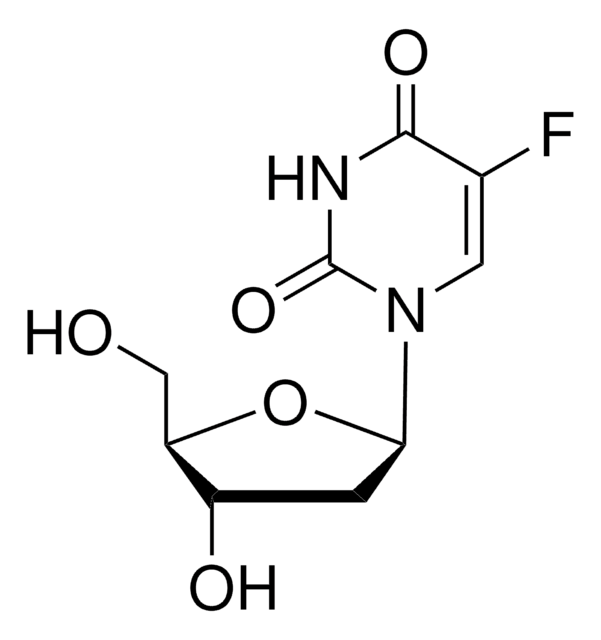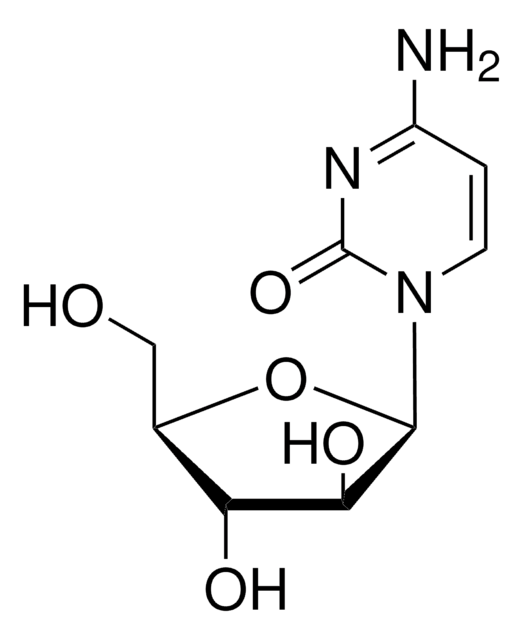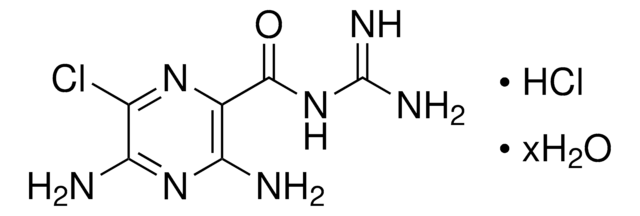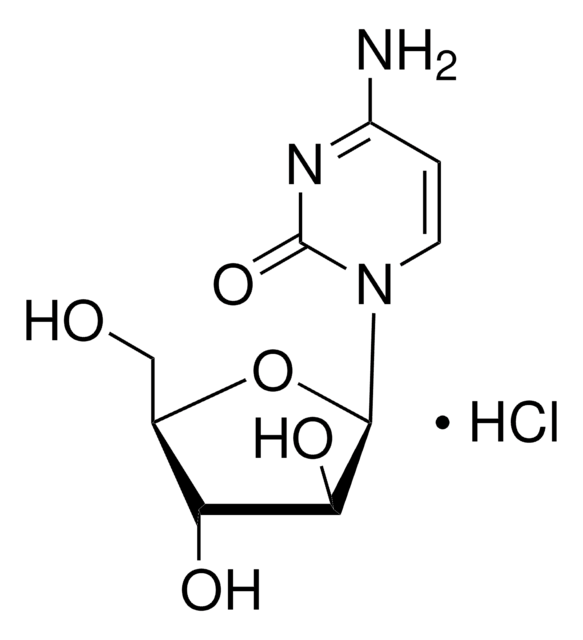G110
Guanabenz acetate salt
powder
Sinônimo(s):
1-(2,6-Dichlorobenzylideneamino)guanidine acetate salt, WY-8678
About This Item
Produtos recomendados
Formulário
powder
Nível de qualidade
cor
white
solubilidade
H2O: 10 mg/mL
alcohol: 50 mg/mL
originador
Wyeth
cadeia de caracteres SMILES
CC(O)=O.NC(=N)N\N=C\c1c(Cl)cccc1Cl
InChI
1S/C8H8Cl2N4.C2H4O2/c9-6-2-1-3-7(10)5(6)4-13-14-8(11)12;1-2(3)4/h1-4H,(H4,11,12,14);1H3,(H,3,4)/b13-4+;
chave InChI
MCSPBPXATWBACD-GAYQJXMFSA-N
Informações sobre genes
human ... ADRA2A(150) , ADRA2B(151) , ADRA2C(152)
Procurando produtos similares? Visita Guia de comparação de produtos
Ações bioquímicas/fisiológicas
Características e benefícios
Palavra indicadora
Danger
Frases de perigo
Declarações de precaução
Classificações de perigo
Acute Tox. 3 Oral
Código de classe de armazenamento
6.1C - Combustible acute toxic Cat.3 / toxic compounds or compounds which causing chronic effects
Classe de risco de água (WGK)
WGK 3
Ponto de fulgor (°F)
Not applicable
Ponto de fulgor (°C)
Not applicable
Equipamento de proteção individual
dust mask type N95 (US), Eyeshields, Faceshields, Gloves
Escolha uma das versões mais recentes:
Já possui este produto?
Encontre a documentação dos produtos que você adquiriu recentemente na biblioteca de documentos.
Os clientes também visualizaram
Artigos
α2-Adrenoceptors
Conteúdo relacionado
DISCOVER Bioactive Small Molecules for Neuroscience
Nossa equipe de cientistas tem experiência em todas as áreas de pesquisa, incluindo Life Sciences, ciência de materiais, síntese química, cromatografia, química analítica e muitas outras.
Entre em contato com a assistência técnica











